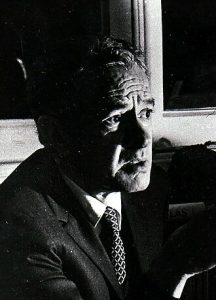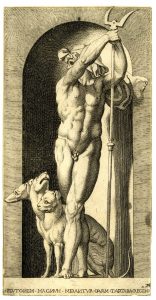In 1493, on his second voyage to the Americas, Christopher Columbus discovered Puerto Rico, an island that he named San Juan Bautista. On his first trip, Columbus, as we know, discovered La Española (Hispaniola), which is today the countries of Haiti and the Dominican Republic. In a failed attempt to reach La Española on his second trip, Columbus landed on Puerto Rico, where he was received by the Taíno Indians, who were of the same ethnic group as the people of La Española and the other islands in the Caribbean.1
Months after reaching the Island, the Spaniards started the process of colonizing the Taíno Indians, led by Juan Ponce De Leon, who was one of the conquistadors that came with Columbus. Later, in 1508, De Leon became the first governor of San Juan Bautista. During this process of colonization, the Taíno Indians did not show resistance because they believed the Spaniards were gods. The reason they saw the Spaniards as gods was because there had been a Taíno legend that spoke of a time when gods were going to rise from the water to give salvation to the Taíno. This legend facilitated the process of colonization for the Spaniards, since they did not encounter any native resistance. Within a short time they had created villages and colonies. By the beginning of the 1500’s, the Taíno natives were working in gold mines and plantations. In 1514, the Taíno decided to take matters into their own hands and rebel against their Spanish overlords. What resulted was one of the most brutal genocides in Latin American history. More than 25,000 Taíno Indians were murdered by the Spaniards on the Island of San Juan Bautista. This means that 85-90% of their population had been killed at the hands of the Spaniards. After the rebellion, the Spaniards noticed that the natives that had survived were not enough to fulfill their labor requirements. They decided to search for a new work force.2
After the massacre of 1514, the Spaniards noticed that they needed a new “work force,” as they called their slaves; so in 1518 they started importing African slaves from the Gulf of Guinea. The slaves started to reach the island later that year, and became the new “work force” of the Spaniards along with the small number of Taíno Indians that had survived the massacre. This caused more problems, since the Spaniards and the Africans brought a variety of diseases to the Island, such as small-pox and measles. Approximately two million Taíno Indians that lived on the islands of the Caribbean died from these diseases. By the late 1500’s there were no more Taíno Indians left on the island of San Juan Bautista; only the children of those who intermarried with the Spaniards and Africans survived. Of course, the Taíno, Africans, and Spaniards intermarried through time, and this is why Puerto Ricans today have such a diverse racial heritage; but the original Taíno racial group became extinct by around 1600. By that time the island of San Juan Bautista had become one of the most important colonies in the Caribbean. The Spaniards now had a way to export their products to the rest of the Caribbean and Latin America through this island, giving them an economical advantage. In less than thirty years the Spaniards took the Taíno land, men, women, and children, and virtually erased a whole population from the face of the earth. Most people consider Christopher Columbus as one of the greatest explorer to ever live, and as a hero of sorts, but have they taken into consideration the many civilizations in the Americas that have been affected by him? Not only the Taíno population, but also the Aztecs, the Incas, and many other societies throughout the Americas were affected significantly by this Columbian moment in history.3
- Roberto Marquez, “Sojourners, Settlers, castaways and creators: A recollection of Puerto Rico past and Puerto Rico present,” Massachusetts Review 36, no. 1 (1995): 94. ↵
- Robert M. Poole, “What Became Of The Taíno?” Smithsonian 42, no. 6 (October 2011): 58. ↵
- Byron Cannon, “West Indian Uprisings,” Salem Press Encyclopedia (January 2016): 583-586. ↵



64 comments
Maria Callejas
First of all, great way to start your article! I had no idea Colombus discovered Puerto Rico by accident. It is truly amazing to see how the natives thought the conquistadors were gods, since through history the common to have bloody duels and rebellions. So for sure, this “Conquista” was far easier than the other Spaniards encountered. Nevertheless, they quickly realized that they were being mistreated. Conquistas were indeed horrific transition periods, glad that it is part of our past. Very good informative article, great work!
Megan Barnett
I didn’t really know any of this information about Puerto Rico until after reading this article. And it was shocking to hear that after the Spaniards wiped out a popular of people that they just brought in another to be slaves for them. I also liked the conclusion of this article as it leaves you to think why we have Columbus day when it seems as though he has done more wrong than good.
Gabriela Serrato
Wow. This article was amazing. I feel so cheated by my education for not being taught about this moment in history. I do find that it is extremely misrepresented, especially to children in elementary school who are taught that Christopher Columbus is great and a hero. But articles like this and so many other scenarios, prove that he was really quite the opposite. An entire population was exterminated! How can a man be given so much power and admiration today be given so when he was responsible for acts like these!
Mario De Leon
Christopher Columbus and his discovery of the Americas is one of the most influential discoveries in human history. We have all heard this story before but this article tells the side not many people like to talk about. The author did a good job of mentioning the Taino people and I like how at the end he mentioned all the other civilizations affected by this discovery.
Faisal Alqarni
Hello Andres, it is always great to know the whole story of any particular occurrence, just like you said we have always thought of Columbus as this great explorer and even though we cannot take this fact away from him it is also only right to recognize the negative impact he ha if only to be honoring the heritage of those people who suffered as a result of Columbus finding them. It is sad to know that a whole race were lost in favor of profit. Thank you for making sure the Taino is no longer a forgotten people.
Johnanthony Hernandez
Great article, I can agree that many people do not realize that Christopher Columbus not only helped colonize the New World, but in turn destroyed so many cultures like the Taino. They saw the Spaniards as gods, not realizing until it was too late that these were not gods but devils. It still amazes me that some many still see him as a great explore that brought, at that time, modern civilization to the New World, while over looking the fact that he didn’t civilize them but destroyed them. Again, great article filled with great information.
Aimee Trevino
great article! it is interesting to see the Spaniards and early colonizers like Columbus killing the Natives, even though they were primarily Catholic. It is so sad to see that the Taino thought they were Gods, and then treated so horribly. By the time they tried to fight back it was way too late. Different way of seeing Columbus, as he is usually glorified.
Zaraly Frasquillo Bejarano
I knew that when Christopher Columbus and the Spanish were on their expeditions they weren’t necessarily the nicest group of people but this is crazy. I don’t think I will ever understand how people in the past were okay with all of these killings of innocent people. I really liked this article, it was super easy for a non history major to understand and it was really interesting.
Hayden Hollinger
In a topic I know very little about, this article helped me develop an understanding for Columbus discovery of Puerto Rico, having previously found Haiti and the Dominican Republic. This article is very well written and has a good structure which allows to me to fully understand the information the writer is trying to present. It is a very shocking article to realise the full magnitude of the problem that took so many lives.
Gabriela Medrano
The main focus in the article was the Spaniards influence on the Americas as a whole and not individually Christopher Columbus. He was briefly mentioned throughout the text and makes the title of this article sort of deceiving. However, it was a good read. Enjoyed the topic chosen and provided information on interesting facts on Puerto Rican history. Taino Indians? This race is now nonexistent but its appreciated that through your writing they have been resurfaced. Well done!